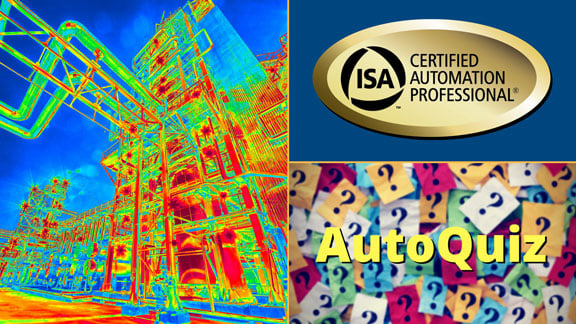AutoQuiz is edited by Joel Don, ISA's social media community manager.
Today's automation industry quiz question comes from the ISA Certified Automation Professional certification program. ISA CAP certification provides a non-biased, third-party, objective assessment and confirmation of an automation professional's skills. The CAP exam is focused on direction, definition, design, development/application, deployment, documentation, and support of systems, software, and equipment used in control systems, manufacturing information systems, systems integration, and operational consulting. Click this link for more information about the CAP program. The following question comes from the CAP study guide, Performance Domain III, System Design.

Which of the following protection techniques is acceptable for equipment located in a Class I, Division 1 area?
a) explosion-proof apparatus and nonincendive equipment
b) explosion-proof apparatus and intrinsic safety
c) dust ignition-proof and nonincendive equipment
d) hermetically sealed and intrinsic safety
e) none of the above
Hazardous location protection techniques are defined by NEC 500.7 (NEC 2002 Code). The protection techniques are permitted as follows:
- Explosion proof apparatus: Class I, Div1 or 2
- Intrinsic safety: Class I, Div 1 or2; Class II Div 1 or 2; or Class III, Div 1 or 2
- Non-incendive equipment: Class I, Div 2; Class II, Div 2; or Class III, Div 1 or 2 (Does NOT Include Class 1, Div 1)
Dust ignition proof: Class II, Div 1 or 2 (Does NOT include Class I, Div 1) - Hermetically sealed: Class I, Div 2; Class II, Div 2; or Class III, Div 1 or 2 (Does NOT include Class I, Div 1)
Reference: Earley, NEC 2002 Handbook, NFPA, 2002
The operational definitions of explosion proof and intrinsically safe are useful in this context. An explosion proof apparatus is one enclosed in a case that is capable of withstanding an explosion of a specified gas or vapor that may occur within it and of preventing the ignition of a specified gas or vapor surrounding the enclosure by sparks, flashes, or explosion of the gas or vapor within and that operates at such an external temperature that a surrounding flammable atmosphere will not be ignited thereby.
An intrinsically safe apparatus is one in which all the electrical circuits are intrinsically safe, which is to say the power that courses through the circuit is incapable of causing ignition of a mixture of flammable or combustible material in which the circuit is operating.
The correct answer is B, explosion-proof apparatus and intrinsic safety.




